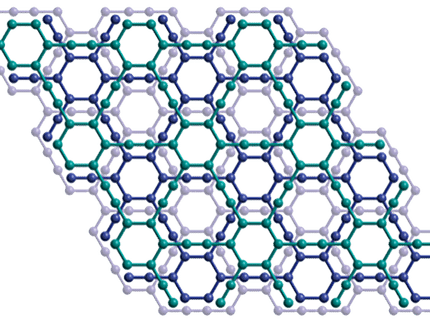New tech delivers high-tech film that blocks electromagnetic interference
Electromagnetic interference (EMI), which can harm smartphones, tablets, chips, drones, wearables, and evenaircraft and human health, is increasing with the explosive proliferation of devices that generate it. Themarket for EM-blocking solutions, which employ conductive or magnetic materials, is expected to surpass $7 billion by 2022.
Andre Taylor, associate professor of chemical and biomolecular engineering at the NYU Tandon School of Engineering, along with a team that included Yury Gogotsi, Distinguished University and Charles T. and Ruth M. Bach Professor Materials Science and Engineering at Drexel University, and Menachem Elimelech, Roberto C. Goizueta Professor of Chemical & Environmental Engineering at Yale University used an innovative technique to produce relatively low-cost EMI-blocking composite films.
To fashion the films, the team employed spin-spray layer-by-layer processing (SSLbL), a method Taylor pioneered in 2012. The system employs mounted spray heads above a spin coater that deposit sequential nanometer-thick monolayers of oppositely charged comapounds on a component, producing high quality films in much less time than by traditional methods, such as dip coating.
The process allowed them to fashion flexible, semi-transparent EMI-shielding film comprising hundreds of alternating layers of carbon nanotube (CNT), an oppositely charged titanium carbide called MXene -- a family of carbide flakes first engineered by Gogotsi -- and polyelectrolytes. Taylor explained that those charge characteristics confer benefits beyond EMI shielding.
"As we worked to discern the roles different components play," he said, "We found that the strong electrostatic and hydrogen bonding between oppositely charged CNT and MXene layers conferred high strength and flexibility." He added that MXene has the dual benefits of being both adsorbing (it easily adheres to a surface) and conductive, which is important for blocking EMI. "And since the film itself is semi-transparent, it has the benefit of being applicable as EMI shielding for devices with display screens, such as smartphones. Other kinds of shields -- metal for example -- are opaque. Shielding is good, but shielding that allows visible light through is even better."
The SSLbL method also confers nanometer-level control over the architecture of the film, allowing manufacturers to change specific qualifies such as conductivity or transparency, because it allows for discrete changes in the composition of each layer. By contrast, films comprising a monolayer mélange of nanoparticles, polyelectrolytes and graphene in a matrix cannot be so modified. Besides high stability, flexibility and semi-transparency, the MXene-CNT composite films also demonstrated high conductivity, a property critical to electromagnetic shielding because it dissipates EM pulses across the film's surface, weakening and dispersing it.
While manufacturers have shown interest in EMI shielding made of carbon nanotubes and graphene combined with conductive polymer composites, until now a relatively fast, inexpensive, means of creating an optimal mix of these qualities on a thin flexible film was elusive, explained Taylor.
"The primary interest in adding carbon materials to shielding was to add conductive pathways through the film," said Taylor. "But the SSLbL system is also much faster than traditional dip coating, in which a component to be shielded is repeatedly dipped in a material, rinsed, then dipped again in another layer, and on and on. That takes days. Our system can create hundreds of bi-layers of alternating MXene and CNT in minutes."
While spin-spraying limits component size, Taylor said that, in theory, the system could create EMI shielding for devices and components equivalent in diameter to the 12-inch wafers, for which spin-coating is frequently employed as a coating mechanism in the semiconductor industry.
"It is less expensive to produce it this way and faster because of the tighter connection between materials, and the LbL process facilitates the controlled arrangement and assembly of disparate nanostructured materials much better than just depositing repeated layers of a mix on several components. One can envision tuning the desired properties of a cross-functional thin film using a wide range of parameters, nanostructured materials and polyelectrolytes using this system."
Original publication
Guo‐Ming Weng, Jinyang Li, Mohamed Alhabeb, Christopher Karpovich, Hang Wang, Jason Lipton, Kathleen Maleski, Jaemin Kong, Evyatar Shaulsky, Menachem Elimelech, Yury Gogotsi, André D. Taylor; "Layer‐by‐Layer Assembly of Cross‐Functional Semi‐transparent MXene‐Carbon Nanotubes Composite Films for Next‐Generation Electromagnetic Interference Shielding"; Advanced Functional Materials; 2018

































































